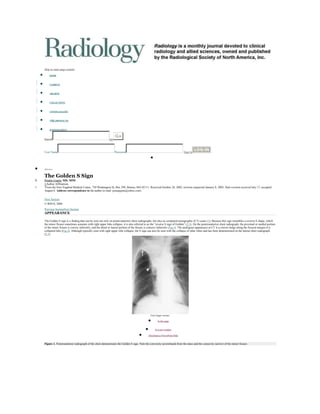The Golden S sign is a radiographic finding seen on chest x-rays and CT scans that indicates right upper lobe collapse. It appears as a reverse S shape of the minor fissure, with the proximal portion convex inferiorly and distal portion concave inferiorly. This sign suggests the presence of a central mass, raising suspicion for bronchogenic carcinoma or other tumors. While cancer cannot be definitively diagnosed, the Golden S sign should alert radiologists to consider malignancy as a potential cause of the collapse.
